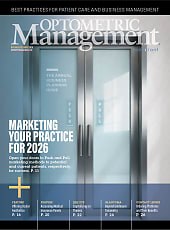
On April 21, representatives from The Vision Council (TVC) met with Robin Colwell, deputy assistant to the president and deputy director of the National Economic Council, at the White House to discuss the role of vision care in public health and the challenges posed by current trade policies.
“We appreciated the opportunity to meet with the White House and share how foundational vision is to Americans’ everyday lives,” says TVC CEO Ashley Mills. “This conversation allowed us to highlight both the essential nature of vision care and the impact that rising tariffs are having on our industry and the consumers we serve.”

The delegation included leaders from across the optical industry, who shared concerns about how rising tariffs and regulatory requirements are affecting manufacturers, suppliers, retailers, and patients. Discussions addressed the increasing costs of eyewear and vision care products (many of which are classified as Class I medical devices) and the subsequent impact on public programs such as Medicare, Medicaid, and the Department of Veterans Affairs.
Industry participants highlighted several challenges during the meeting. Scott Shapiro, executive director of industry relations and former CEO of Europa Eyewear, spoke about difficulties faced by U.S.-based manufacturers relying on imported components and restrictive “Made in USA” labeling regulations. Brandon Butler, president and CEO of Artisan Lab Network & PAL, addressed the obstacles to reshoring production, including the limited availability of domestically produced optical machinery and the financial burden of tariffs on raw materials.
Jamie Rosin, owner of Rosin Optical Co. Inc., raised concerns about the effects of delayed access to vision care on vulnerable populations such as children and seniors. Ken Bradley, president and CEO of Eschenbach Optik of America, Inc., discussed the increased costs to public health programs and the associated taxpayer impact.
TVC’s delegation also presented policy recommendations aimed at easing pressures on the industry while supporting U.S. manufacturing goals. Proposals included updating “Made in USA” labeling standards for products assembled domestically with imported parts, ensuring regulatory consistency for Class I medical devices, and introducing incentives to strengthen domestic manufacturing and supply chains.



